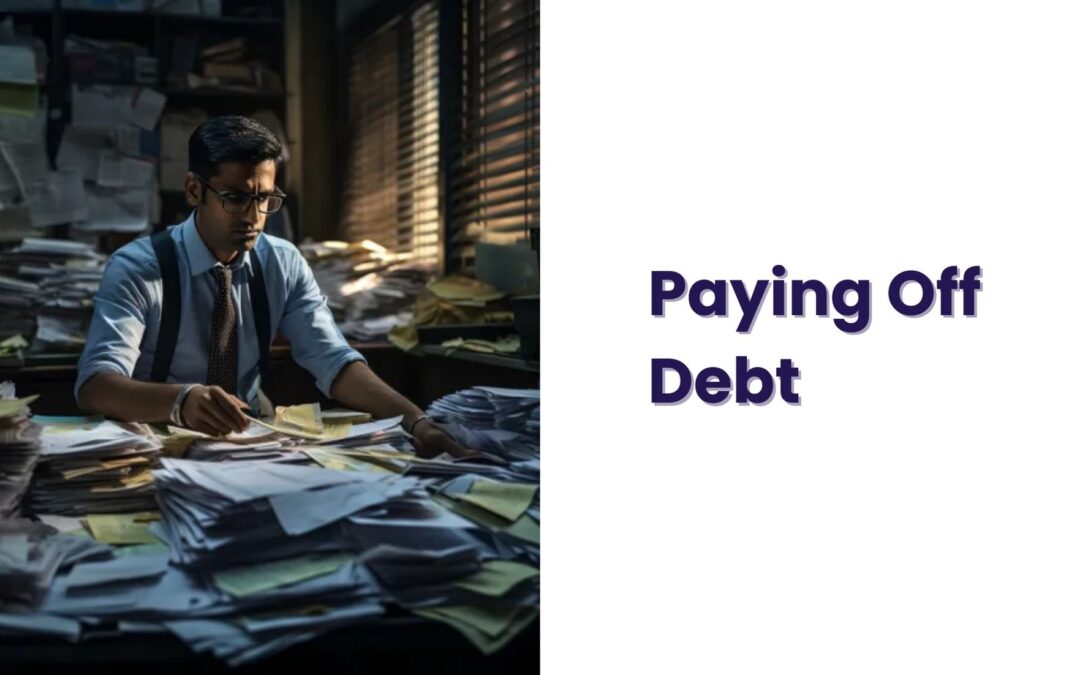In a world where financial stability is a key concern for many, mastering strategies to pay off debt and enhance your financial health is a crucial skill. Let’s delve into actionable insights that can pave the way to a debt-free and financially secure future.
Do you want to learn about an amazing app where you can save your money in 24k digital gold?
Download the Jar App today!
Understanding Your Financial Landscape before paying off debt
Before diving into debt payoff strategies, it’s imperative to assess your financial landscape. Conduct a comprehensive review of your income, expenses, and outstanding debts. This step lays the groundwork for a strategic approach to improve your financial health.
Setting Clear Goals: The Roadmap to Financial Freedom
Boldly define your financial goals. Whether it’s paying off credit card debt, student loans, or other financial obligations, having clear objectives provides direction and motivation. Break down your goals into manageable milestones for a more achievable path to financial freedom.
The Power of Budgeting: A Weapon Against Debt
Crafting a realistic budget is akin to having a financial roadmap. Categorize your expenses, differentiating between essentials and discretionary spending. Allocate a significant portion of your income to debt repayment while ensuring you cover necessary living expenses. Tools like budgeting apps can be invaluable in this journey.
Prioritizing High-Interest Debts
Not all debts are created equal. Prioritize paying off high-interest debts first, as they tend to accumulate faster. This approach minimizes the long-term impact of interest rates, accelerating your journey to a debt-free life.
Snowball vs. Avalanche Method: Choosing Your Approach Towards Paying off debt
Two popular debt repayment strategies, the snowball and avalanche methods, offer different approaches. The snowball method involves paying off smaller debts first, gaining momentum, and then tackling larger ones. Conversely, the avalanche method focuses on high-interest debts, saving on interest payments. Choose the method that aligns with your financial priorities and preferences.
Emergency Fund: Your Financial Safety Net
Building an emergency fund is a cornerstone of financial health. In unforeseen circumstances, having a financial cushion prevents you from relying on credit and incurring more debt. Aim for three to six months’ worth of living expenses in your emergency fund for optimal security.
Exploring Additional Income Streams To Pay off debt
Boost your debt payoff efforts by exploring supplementary income streams. Freelancing, part-time gigs, or selling unused items online can inject extra funds into your debt repayment plan. Every additional dollar contributes to your journey toward financial stability.
Celebrate Small Wins: Fuel for the Financial Journey
Acknowledge and celebrate small victories along the way. Paying off a credit card or achieving a savings milestone deserves recognition. Positive reinforcement fosters a mindset of financial discipline and motivates continued progress.
Seeking Professional Guidance
If navigating the intricacies of debt payoff feels overwhelming, consider seeking advice from financial experts. A financial advisor can provide tailored strategies, helping you make informed decisions and optimize your path to financial wellness.
In conclusion, mastering your finances involves a combination of strategic planning, disciplined budgeting, and a commitment to continuous improvement. By implementing these proven strategies, you’ll not only pay off debt but also pave the way for a financially secure and empowered future. Remember, every step forward is a step closer to financial freedom.
FAQs on paying off debt
1. Q: What is the first step in paying off debt and improving financial health?
A: Initiating the process begins with a comprehensive understanding of your financial landscape. Conduct a thorough review of your income sources, monthly expenses, and the extent of outstanding debts. This initial step lays the groundwork for developing a strategic and effective plan to improve your overall financial health.
2. Q: How can I set realistic financial goals for paying off?
A: Setting realistic financial goals involves more than just envisioning a debt-free future. Break down your overarching objectives into manageable milestones. By doing so, you create a roadmap that not only provides clear direction but also serves as a constant source of motivation throughout your journey to financial freedom.
3. Q: Which debt repayment strategy is better – snowball or avalanche method?
A: Both the snowball and avalanche methods are effective, but the choice depends on your personal preferences and financial circumstances. The snowball method focuses on paying off smaller debts first, gaining momentum, while the avalanche method prioritizes high-interest debts, potentially saving you more on interest payments. Select the strategy that aligns best with your financial priorities and motivates you to stay on track.
4. Q: Why is building an emergency fund crucial for financial health?
A: An emergency fund acts as a financial safety net, offering a buffer during unforeseen circumstances. By having three to six months’ worth of living expenses saved, you create a protective shield that prevents the need to rely on credit in times of unexpected expenses. This fund is a cornerstone of financial health, providing peace of mind and stability.
5. Q: How can I celebrate small financial victories along the way?
A: Recognizing and celebrating small financial victories is an essential part of the journey. Whether it’s paying off a credit card or achieving a savings milestone, these achievements deserve acknowledgment. Celebrating these wins reinforces positive financial behavior, fostering a mindset of discipline and motivation to continue making progress towards your larger financial goals.

